#south china morning post
Explore tagged Tumblr posts
Text

Michelle Laff by Stanislaw Boniecki for SCMP Style/ South China Morning Post Style Magazine Dec23
#michelle laff#supermodel#beauty#stanislaw boniecki#scmp style#south china morning post#fashion editorial#fashion photography#editorial#fashion#photography#style#fw23#fw24
279 notes
·
View notes
Text
Social activist Ramendra Kumar who is general secretary of the Delhi Shramik Sangathan, a federation of unorganised workers, says gig workers are slightly better treated than domestic workers because, while they may be excluded from public spaces, they do not have to enter homes and this spares them the worst humiliations. “What older Indians do immediately on meeting a maid, cook or cleaner is to ask their name. That tells them instantly both their caste and religion so that Hindus can then exclude certain people, from, say, working in the kitchen because of caste purity” Kumar said. “India is the most stratified and divided society in the world and even new areas of the economy, such as gig workers, are not exempt from the old attitudes that affect traditional workers like maids and cooks which divide us Indians. These people want gig workers to deliver what they want but don’t want to see them or hear them.”
Amrit Dhillon, ‘Delivering discrimination? India’s gig workers see access denied by class divide’, South China Morning Post
#South China Morning Post#Amrit Dhillon#India#Ramendra Kumar#Delhi Shramik Sangathan#gig workers#domestic workers#casteism#communalism#segregation
47 notes
·
View notes
Text




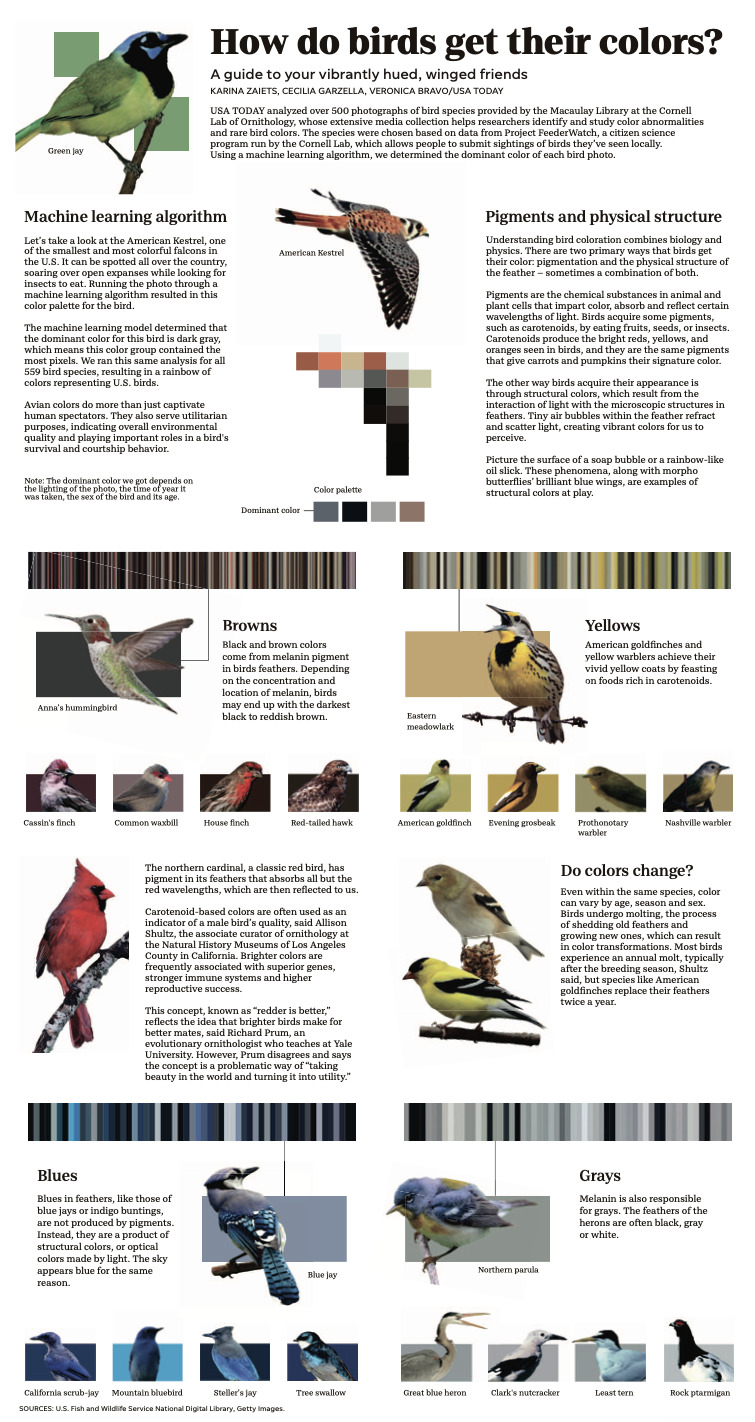

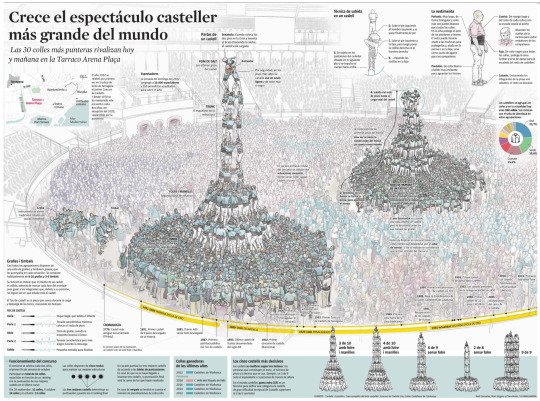
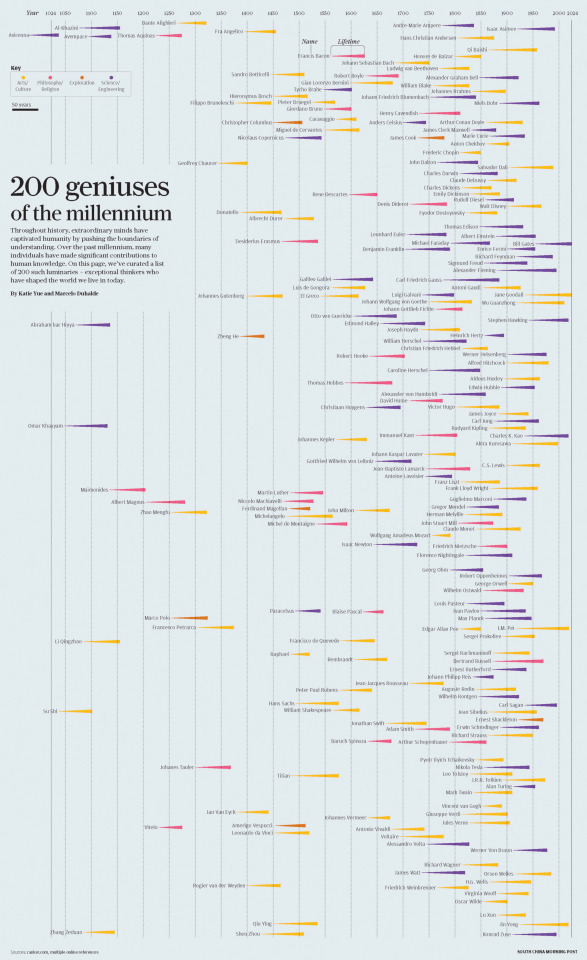

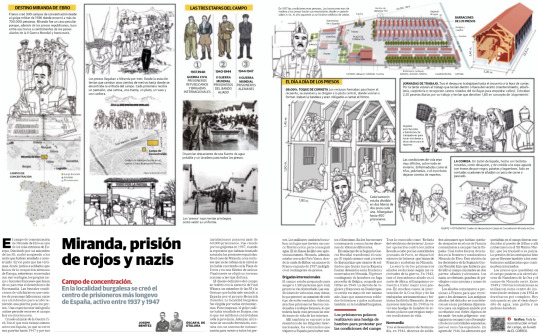
EXTRA! es una sección mensual que recopila los mejores diseños en las páginas de la prensa nacional e internacional, con publicaciones que no han aparecido con anterioridad en el blog.
En la recopilación de octubre destacamos (de arriba a abajo y de izquierda a derecha):
[1] Cómo genera su electricidad cada estado en EE.UU., una gráfica y energética doble página de Nadja Popovich en el The New York Times del 23 de octubre.
[2] Aprendiendo a catar vino en tres pasos como un profesional: alcohólica doble de Izania Ollo en El Diario Vasco del 5 de octubre.
[3] Cómo consiguen las aves diferenciarse con esos vibrantes colores y qué usos les dan: una propuesta de Karina Zaiets, Cecilia Garzella y Veronica Bravo en el USA Today del día 11.
[4] Siguiendo el rastro de destrucción del huracán Helene, un mapa a toda página de Bora Erden, Lalena Fischer, June Kim, Elena Shao y Jeremy White en el New York Times del día 2.
[5] El espectáculo casteller más grande del mundo, una preciosa doble de Raúl Camañas, Alan Jürgens y Clara Penín en La Vanguardia del 5 de octubre.
[6] El South China Morning Post se propone seleccionar a los 200 genios del milenio: una cronología de cerebritos diseñada por Katie Yue y Marcelo Duhalde en el diario del día 11.
[7] El Washington Post nos cuenta con ilustraciones cómo Estados Unidos incautó un megayate ruso de 90 millones de dólares. Es un trabajo de Jeff Stein y Stephanie Hays publicado el 25 de octubre.
[8] Cerramos con el campo de concentración de Miranda de Ebro, el centro de prisioneros más longevo de España activo entre 1937 y 1947. Nos cuenta su historia Josemi Benítez en El Correo del 12 de octubre.
… EXTRA! anteriores: 2024: enero · febrero · marzo · abril · mayo · junio · julio · agosto · septiembre Años anteriores: 2023 · 2022 · 2021 · 2020 · 2019 · 2018 · 2017 · 2016 · 2015
#EXTRA!#infografía#ilustraciones#cartografía#the new york times#diario vasco#USA Today#la vanguardia#south china morning post#the washington post#el correo#medios internacionales
7 notes
·
View notes
Text










Swedish Model Vilma Sjoberg for (SCMP STYLE )- South China Morning Post September 2024 Issue- shot by David Roemer and styled by Aryeh Lappin
#fashion photography#photoshoot#editorial#fashion editorial#magazine cover#vilma sjoberg#scmpstyle#south china morning post
9 notes
·
View notes
Text
youtube
Remembering Hong Kong’s ‘City of Darkness’, May 22, 2024
The Kowloon Walled City in Hong Kong was once considered the densest settlement in the world. The sprawling neighbourhood was often characterised as a lawless enclave with poor living conditions, criminal activity and a thriving black market, trading anything from pirated goods to drugs and sex. It was demolished in 1994, but its legacy lives on through the memories of its former residents. Thirty years after it was torn down, former residents and others who worked there shared some of their most vivid recollections of what was known as the “City of Darkness”. South China Morning Post
#Hong Kong#Kowloon Walled City#Kowloon#history#architecture#urban#South China Morning Post#infrastructure
5 notes
·
View notes
Text
For patients battling diabetes, a group of Chinese scientists and clinicians may offer a glimmer of hope. For the first time in the world, a patient’s diabetes has reportedly been cured using cell therapy.
The patient, a 59-year-old man who had been living with type 2 diabetes for 25 years, was at serious risk of complications from the disease. He had a kidney transplant in 2017, but had lost most of his pancreatic islet function which controls blood glucose levels, and relied on multiple insulin injections every day.
“He was at great risk of serious diabetes complications,” Yin Hao, a leading researcher at Shanghai Changzheng Hospital, told Shanghai-based news outlet The Paper earlier this month.
The patient received the innovative cell transplant in July 2021. Eleven weeks after the transplant, he was free of the need for external insulin, and the dose of oral medication to control blood sugar levels was gradually reduced and completely stopped one year later.
“Follow-up examinations showed that the patient’s pancreatic islet function was effectively restored,” Yin said. The patient has now been completely weaned off insulin for 33 months.
The medical breakthrough, achieved by a team of doctors and researchers from institutions including Shanghai Changzheng Hospital, the Centre for Excellence in Molecular Cell Science under the Chinese Academy of Sciences, and Renji Hospital, all based in Shanghai, was published in the journal Cell Discovery on April 30.
“I think this study represents an important advance in the field of cell therapy for diabetes,” said Timothy Kieffer, a professor in the department of cellular and physiological sciences at the University of British Columbia in Canada.
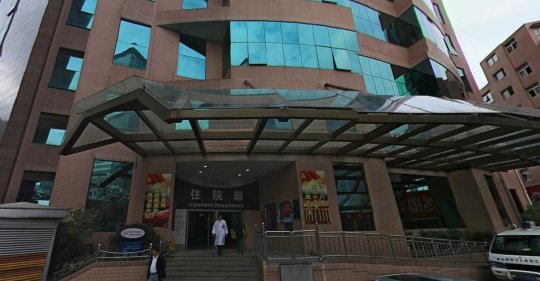
Diabetes is a chronic condition that affects the way our bodies convert food into energy.
What we consume is broken down into glucose – a simple sugar – and released into the bloodstream. Insulin, produced by the islets of the pancreas, is essential for regulating blood sugar levels.
In diabetes, this system is hijacked: either the body does not produce enough insulin, or it cannot use the insulin it produces effectively.
There are several types of diabetes, of which type 2 is the most common, affecting almost 90 per cent of sufferers. It is largely diet-related and develops over time.
Regardless of the type of diabetes, failure to maintain normal blood glucose levels over time can lead to serious side effects, including heart disease, vision loss and kidney disease.
According to the US Centres for Disease Control and Prevention, “there isn’t a cure yet for diabetes”.
Along with losing weight, eating well and taking medication, insulin is the mainstay of treatment for some, but this requires frequent injections and monitoring.
Scientists around the world are researching islet transplant as a promising alternative, mainly by creating islet-like cells from human stem cell cultures. Now, after more than a decade of work, the group of Chinese scientists has come a step closer.
The team used and programmed the patient’s own peripheral blood mononuclear cells, Yin said, which were then transformed into “seed cells” and reconstituted pancreatic islet tissue in an artificial environment.
While preclinical data from Kieffer’s team supports the use of stem cell-derived islets for the treatment of type 2 diabetes, the report by Yin and colleagues is, to Kieffer’s knowledge, “the first evidence in humans”.
Yin said the breakthrough was another step forward in the relatively new field of regenerative medicine – where the body’s own regenerative capabilities are harnessed to treat illness.
“Our technology has matured and it has pushed boundaries in the field of regenerative medicine for the treatment of diabetes.”
Globally, China has the highest number of people with diabetes. According to the International Diabetes Federation, there are 140 million people with diabetes in the country. Of those, about 40 million depend on lifelong insulin injections.
China’s diabetic population is disproportionately high, according to Huang Yanzhong, a senior fellow for global health at the Council on Foreign Relations.
In an article last year, he pointed out that while China accounted for 17.7 per cent of the world’s population, the country’s diabetic population made up a staggering quarter of the global total, placing a huge health burden on the government.
If this approach for cell therapy ultimately works, Kieffer said, “it can free patients from the burden of chronic medications, improve health and quality of life, and reduce healthcare expenditures”.
But to get there, he added, studies in more patients based on the findings of this Chinese study were needed.
6 notes
·
View notes
Text

Michelle Laff by Stanislaw Boniecki for SCMP Style/ South China Morning Post Style Magazine Dec23
#michelle laff#supermodel#beauty#stanislaw boniecki#fashion editorial#fashion photography#editorial#fashion#photography#south china morning post#fw23#fw24
19 notes
·
View notes
Text
Whilst it's certainly important to create and instill safeguards and guidelines to protect humanity - in all the definitions that implies - from the growing proliferation of humanoid robots, I also hope there is a growing debate as to what protections robots ought to have for their safety, especially as they become imbued with more and more sophisticated AI systems.
With the advent of GPT-4o especially, presenting the user with more engaging, humanlike interactions, I think an argument can begin to be made that there should be more consideration given to them to be treated with more empathy and compassion, especially as such machines become more ubiquitous in the home, as either domestic helpers or personal companions.
I think for them to be considered on the same level as humans right now and in the near future may be a bit of a stretch, but certainly there should be a developing mentality to regard them with a similar consideration to, perhaps, the family dog or a welcome houseguest.
Simply put, do unto others (including our robots) as you'd have them do unto you; if we want our mechanical companions and helpers to be benign and helpful and considerate to our needs, then we also need to learn to treat them with the consideration we expect from each other.
I can't say I'm hopeful though.
#world artificial intelligence conference#robotics#laws of robotics#three laws of robotics#isaac asimov#artificial intelligence#ai#south china morning post#chat gpt#gpt 4o#technology#robots#technology news
0 notes
Text
Some gated communities have implemented policies that segregate service workers. The Indian Express newspaper reported that DLF Hamilton Court in Gurgaon displays signs such as “staff and service lift” and “residents and guests only” in its lobby. Public amenities like lawns are off-limits, and workers are discouraged from resting on park benches. “What the rich are doing is walling themselves off in their ‘citadels’ from the real India, from the ordinary people outside who are trying to earn a living,” said trade unionist A. K. Padmanabhan, vice-president of the Centre of Indian Trade Unions.
Amrit Dhillon, ‘Delivering discrimination? India’s gig workers see access denied by class divide’, South China Morning Post
#South China Morning Post#Amrit Dhillon#India#gated communities#Indian Express#DLF Hamilton Court#Gurgaon#segregation#AK Padmanabhan#Centre of Indian Trade Unions
5 notes
·
View notes
Text

⩔ Uno de los trabajos que más nos ha gustado de las últimas semanas es esta fantástica página del South China Morning Post para celebrar el Día del Niño en Hong Kong.
En esta ilustración de Kaliz Lee se esconden ocho animales de la fauna salvaje de la región y solo hace falta un poco de color para descubrirlos.
» South China Morning Post, del 4 de abril de 2023
2 notes
·
View notes
Photo

559 notes
·
View notes
Text

Aliane Uwimana for Style South China Morning Post March 2023, photographed by DeMarcus Allen
17 notes
·
View notes
Text

Princess Li Ran and Prince Charles got married in 2010 in Belgium. Photo: @mumunotinparis/Instagram
#Princess Li Ran#Belgium#Prince Charles of Belgium#Wuhua#Guangdong#South China Morning Post#Gloria Fung
0 notes
Text
LATE-BREAKING NEWS: Digital Multimedia Journalist and Radio DJ 'Frankie Labot' bids farewell in Dumaguete City [#OneNETnewsEXCLUSIVE]

SIBULAN, NEGROS ORIENTAL -- In a heart-wrenching turn of events, the beloved multimedia Dumagueteño radio and TV journalist named Raffy Iphraim T. Cabristante, locally known as "Frankie Labot", was officially resigned or potentially retired from his former late post as News Director of DYYD-FM 106.3mhz's Yes! The Best: Dumaguete. The departure of this iconic figure marks the end of an era for the vibrant local Negrosanon media scene.
Cabristante, a familiar voice in Dumaguete City, has been the face of the aforesaid local radio station of Yes! The Best: Dumaguete, a station under the Cebu Broadcasting Company for Manila Broadcasting Company (CBC-MBC). His final weekend afternoon music radio programme 'The Frankie Labot Show', aired last Saturday afternoon (September 9th, 2023 -- Dumaguete local time), leaving listeners with a bittersweet farewell. Additionally, his occasional weekday morning program 'Yes! Pares', added a unique touch to the local airwaves, making his departure even more poignant.


(FILE PHOTO COURTESY: Cagayan PIO & Niko Baua via ABS-CBN News)
The esteemed journalist's recent contributions to ABS-CBN News highlighted his commitment to covering critical issues affecting the community. His last two (2) news articles delved into the aftermath of Typhoon Goring, which forced nearly 25,000 residents to flee their homes, and the upcoming Barangay and Sangguniang Kabataan (BSKE) elections on Monday morning (October 30th, 2023 at 7am), as they filed a Certificate of Candidacy for everyone else.
In a last new photoshoot captioned post on his personal LinkedIn account, Cabristante expressed gratitude for his time at ABS-CBN News, stating that today marked his last working day as a Digital News Section Editor between March 2022 to late-August 2023. Despite this, his journey does not end here.



(PHOTO COURTESY: Raffy Cabristante via FB PHOTO)
The news unfolds to be broken out as Cabristante takes a leap into the international media landscape. Officially joining the renowned South China Morning Post (SCMP) as a Digital Production Editor, he is set to focus on his first international news scene in the vibrant city of Hong Kong. This marks a significant shift for the journalist who has dedicated his career to local, regional and international reporting for news, showcasing his versatility and adaptability.
The move to SCMP opens new horizons for Cabristante, presenting him with the opportunity to contribute to a global platform and bring local insights for not just the Hongkongians, going to expand an international audience, which later featured either a newspaper journalist individual, online news writing and editing, or both.
As he embarks on this new chapter, Dumaguete bids farewell to one of its most cherished voices, acknowledging the impact Frankie Labot has had on the local Negrosanon media landscape.
The community expresses both pride and sadness as Cabristante takes this bolder step in his career. His legacy as a multimedia journalist and radio disc jockey (DJ) will forever be etched in the hearts of The City of Gentle People, and his presence will be sorely missed on the airwaves of Yes! The Best: Dumaguete as a final signing off.

(FILE PHOTO COURTESY: SCMP website)
He is also embraced this new adventure, we wish Mr. Frankie Labot success and fulfillment in his endeavors with the SCMP.
Yes! The Best FM is a parent radio network firm of the Manila-Cebu Broadcasting Company (MBC-CBC), and ABS-CBN News is a parent news organization of Alto Broadcasting System-Chronicle Broadcasting Network Corporation.
PHOTO COURTESY: ABS-CBN News via LinkedIn PHOTO BACKGROUND PROVIDED BY: Tegna
SOURCE: *https://www.facebook.com/100063502249899/posts/868623728597694 [Referenced FB Post #1 via Frankie Labot] *https://www.facebook.com/100063502249899/posts/878394157620651 [Referenced FB Post #2f via Frankie Labot] *https://news.abs-cbn.com/news/08/29/23/nearly-25000-forced-to-flee-homes-due-to-goring [Referenced News Article #1 via ABS-CBN News] *https://news.abs-cbn.com/news/08/29/23/blockbuster-over-270000-vying-for-barangay-sk-posts [Referenced News Article #2f via ABS-CBN News] *https://www.linkedin.com/posts/raffycabristante_today-marks-my-last-working-day-as-a-digital-activity-7102251028972011520-ddHh [Referenced LinkedIn Captioned Post via Raffy Cabristante] *https://twitter.com/rafcabristante/status/1696489275754492306 [Referenced X Network PHOTO #1 via Raffy Cabristante] *https://twitter.com/rafcabristante/status/1705542305300828628 [Referenced X Network PHOTO #2f via Raffy Cabristante] *https://ph.linkedin.com/in/raffycabristante *https://www.facebook.com/1037420454/posts/10226490473581590 [Referenced FB Captioned Post #1 via Raffy Cabristante] *https://www.facebook.com/1037420454/posts/10226498206094898 [Referenced FB Captioned Post #2 via Raffy Cabristante] *https://www.facebook.com/1037420454/posts/10226515790854506 [Referenced FB Captioned Post #3f via Raffy Cabristante] and *https://en.wikipedia.org/wiki/South_China_Morning_Post
-- OneNETnews Team
#local news#dumaguete#negros oriental#frankie labot#raffy cabristante#yes the best#fm radio#SCMP#south china morning post#departure#awareness#retired#resigned#exclusive#first and exclusive#late-breaking news#OneNETnews
0 notes
Text
0 notes
Text
youtube
China’s Rebel City: The Hong Kong Protests, December 7, 2020
Hong Kong's biggest political crisis since its return to mainland China, starts with an ill-conceived plan by the government for an extradition law to allow the transfer of suspects for trial to Taiwan, Macau and mainland China. It sparks a massive public backlash, drawing millions of protesters onto the streets. By the time the government agrees to drop the extradition bill, events on the streets have overtaken them and Hong Kong spirals out of control. The police, using tear gas and firing rubber bullets to disperse the crowds, find themselves overwhelmed by public resentment and hatred. Hong Kong descends into months of fiery street battles with anger and frustration touching every corner of the city. While the coronavirus pandemic brings a halt to anti-government protests, Beijing is determined not to allow a repeat of the past year’s chaos. But society remains fractured, the old resentments run deep, and the future is uncertain. South China Morning Post
#police#politics#political repression#Hong Kong#China#protest#South China Morning Post#one country two systems#Hong Kong Basic Law#autonomy#suffrage#antiELAB#police brutality#Hong Kong national security law#Carrie Lam#反送中#Jimmy Sham#Civil Human Rights Front#Martin Lee#Regina Ip#extradition#Legislative Council#Rupert Dover#Raymond Siu
0 notes